After a recent conversation with a friend of mine about the Audemars Piguet Royal Oak openworked dial, curiosity got the better of me, and so I started exploring different options of openworked dial watches that might be alternatives to the Royal Oak. After exploring the various options available, I came to the conclusion that the openworked Laureato offered a great alternative to be considered.
It got me thinking as well about the different options available on the market for openworked dial watches, and for this article I wanted to showcase some other examples of that might be less well known but are just as deserving of your attention.
What is an openworked dial watch?
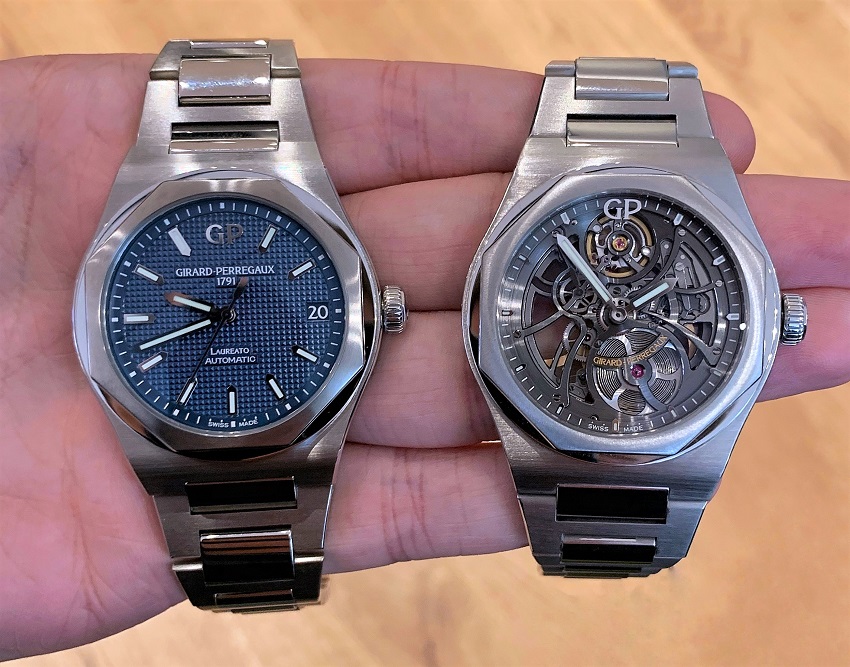
Closed dial (L) versus openworked / skeletonised dial (R)
The term “openworked dial” refers to a watch face where the lack of dial, or areas of the dial have been removed, exposes the inner workings of the watch. This is done to varying degrees depending on the watch, some will have a fully open dial whereas others might only expose certain areas of the movement and retain some of the dial face to cover the movement. Openworked watches can also be skeletonised too, that is to say that if you hold the watch up, you can see the whole way through.
With this in mind, let’s take a look at some of my favourites, starting with the aforementioned Laureato…
Girard-Perregaux Laureato Skeleton
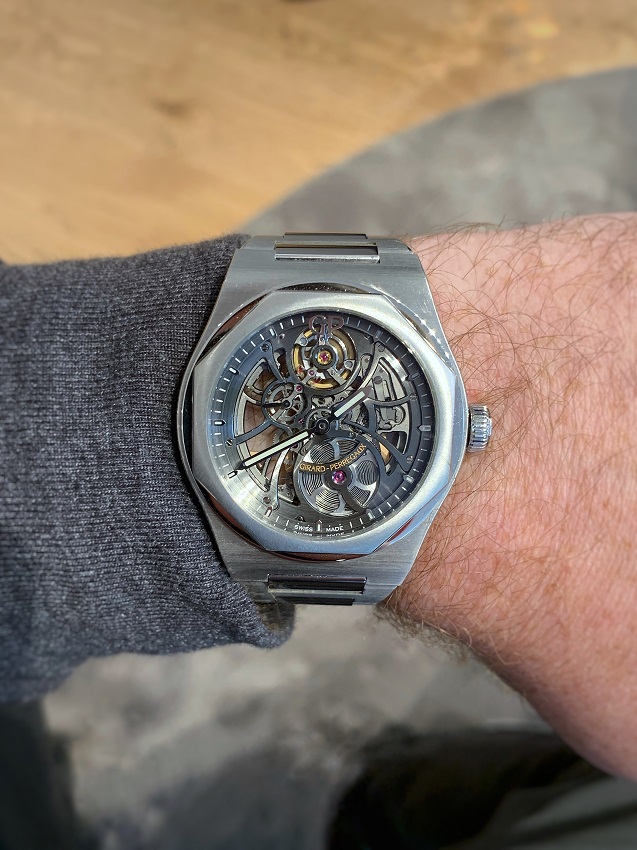
Girard-Perregaux Laureato Skeleton in stainless steel
The Laureato collection is Girard-Perregaux’s offering of the luxury sports watch with an integrated bracelet. It first appeared in 1975 just three years after the Royal Oak (1972), and in fact predates Patek Philippe’s Nautilus (1976), and Vacheron Constantin’s 222 (1977). The name is said to have originated from the Hollywood movie The Graduate, starring Dustin Hoffman, suggested by an Italian importer as the Italian word for ‘graduate’. The collection was revitalised in 2016 to mark the 225th anniversary of Girard-Perregaux.
Within the collection is a skeletonised Laureato, available in a three-hand movement across a multitude of materials including stainless steel, rose gold, ceramic, and even a sapphire case, as well as with a tourbillon available in both white and rose gold.
On the three-hand edition, the openworked dial exposes the inner workings of the 173-component calibre GP1800-006, which is beautifully finished in an anthracite colour thanks to a galvanisation process. The balance wheel is visible at 12 o’clock with the barrel and mainspring visible at 4 o’clock. For the tourbillon movements, there are 262 components making up calibre GP09520-0001.
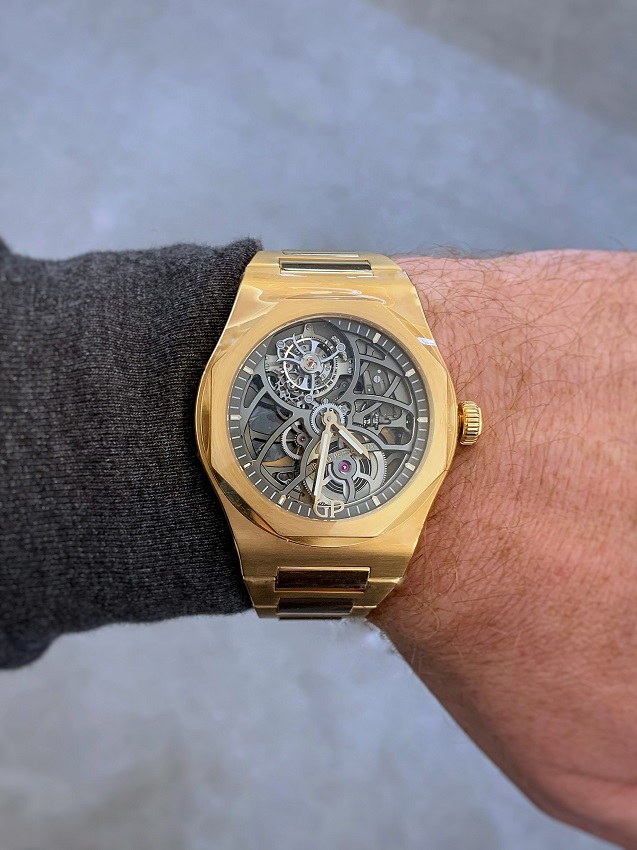
Girard-Perregaux Laureato Skeleton Tourbillon in rose gold
Wearing these watches, you can really appreciate just how magnificent they are – although they certainly come with a price tag to match: the stainless steel three-hand edition is priced £27,200, ceramic is £31,200, but if you fancy the tourbillon it will set you back £105,000 for rose gold or £110,000 for white gold.
As a side note, the Laureato collection offers a lot more than just the skeletonised pieces – there is a plethora of options available in different sizes and complications to suit all tastes, and they are widely available to try before you buy without the need for a multiple year wait. It is a collection and a brand for that matter which I personally think are very much under appreciated.
Arnold & Son Nebula
Originally founded by legendary watchmaker John Arnold (you can read more about him here), the Arnold & Son brand today continues his legacy with some truly wonderful watches. Across the various collections there is more than one example of openworked dial watches, my favourite of which is the Nebula.
Available in two sizes (41.5mm and 38mm) and in both steel and rose gold, the focus of the Nebula is symmetrical dial that has been specifically designed to showcase the gear trains which are supported by seven bridges emanating from the periphery of the dial, with the balance wheel and small seconds display placed at the bottom of the dial to complete the look. I love the symmetry here, and the Nebula is a watch which I would love to have in my own collection one day – the thought that has gone into designing this movement really shows, and I can’t help but to both appreciate and admire it.
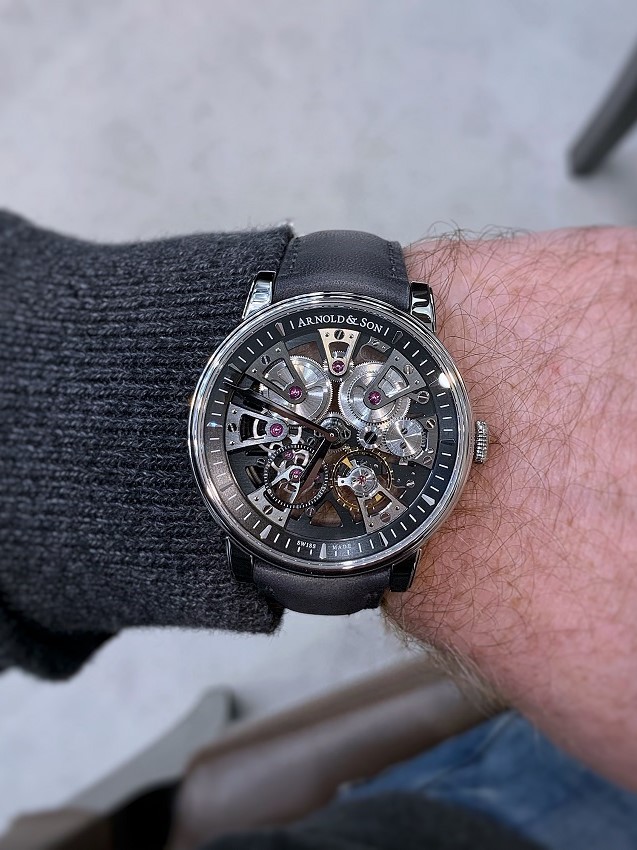
Arnold & Son Nebula in stainless steel
The same A&S5101 manual winding calibre is used in both sizes of the watch, itself measuring 31.5mm in diameter so fitting in each case quite comfortably, and it is just 4.04mm thick. Additionally, it offers an impressive 90 hours of power reserve when fully wound.
This is another watch which comes from a brand which I think deserve to be on the radar of more people than it is, and one which you’re unlikely to find on the wrist of many others owing to the brand’s small annual output of less than 1000 pieces. The Nebula is available for £12,500 in stainless steel, or around £23,500 in rose gold.
Oris ProPilot X
When this watch was released at the end of 2019, I was immediately intrigued – an openworked dial pilots watch is not something you see very often! Whilst the Oris ProPilot is designed as a pilot’s watch, for pilots, the ProPilot X is clearly a step away from the normal conventions of what makes a pilot’s watch. Instead, the design is inspired by aviation (rather than for it) – for example the finish on the bezel is inspired by the turbine on a modern jet engine.
The centrepiece of the watch is of course the skeletonised calibre 115, a manual-wind movement which was developed specifically for this watch as opposed to stripping back an existing design. Aesthetically the watch has a real industrial feel to it thanks to the monochromatic colourway with only the odd splash of gold colour on the occasional component visible from the front, as well as a considered decision to not add polishing, or finishing techniques such as perlage, Geneva stripes, or even any bevelled edges.
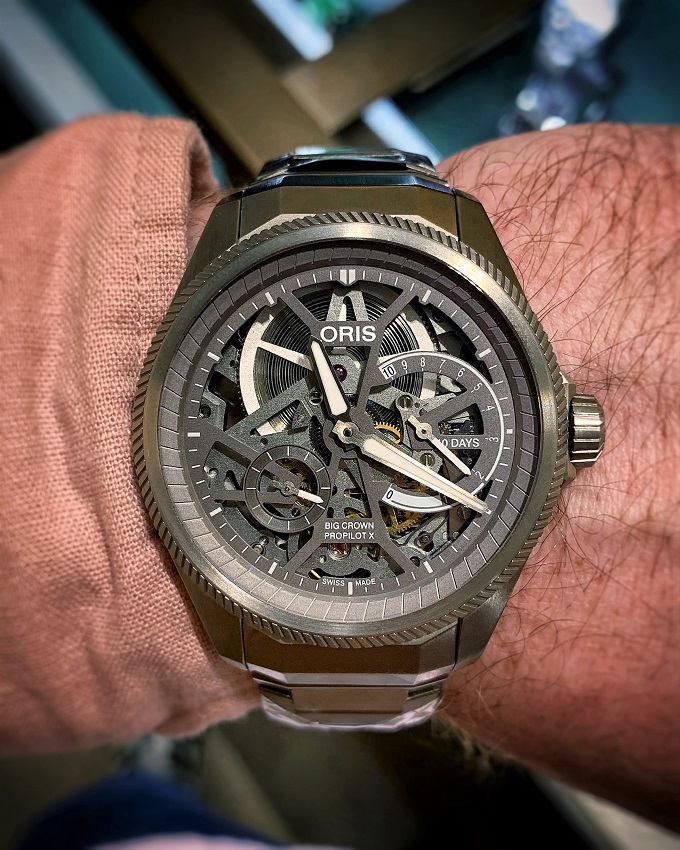
Oris ProPilot X
One of my favourite features is the non-linear 10-day power reserve indication at 3 o’clock – if you notice, at the top of the display the 10, 9, 8 and so on are much closer together than 0, 1 and 2. This allows for a much greater level of granularity as to how much power reserve remains in the barrel as it runs out, and less granularity when it isn’t required where the watch has been fully wound. It looks great alongside the skeletonised barrel too, so over the course of the watch winding down you can literally see the mainspring inside the barrel unwind.
The watch is 44mm in diameter with a titanium case, which makes it exceedingly lightweight on to wear, and it is available with a titanium bracelet for £5,950 or with a leather strap for £5,600.
Bulgari Octo Finissimo
In recent years, with the Octo Finissimo collection Bulgari has continued to break new ground in the realm of ultra-thin watchmaking, with a seemingly continual battle between themselves and Piaget for releasing world-record breaking watches that are the thinnest of a particular calibre genre or – more recently – complications.
Within the collection today there are a couple of options so far as openworked and skeletonised dials go, and I want to take a quick look at them both as when you factor in the degree of difficulty in engineering these watches, frankly it would be remiss of me not to!
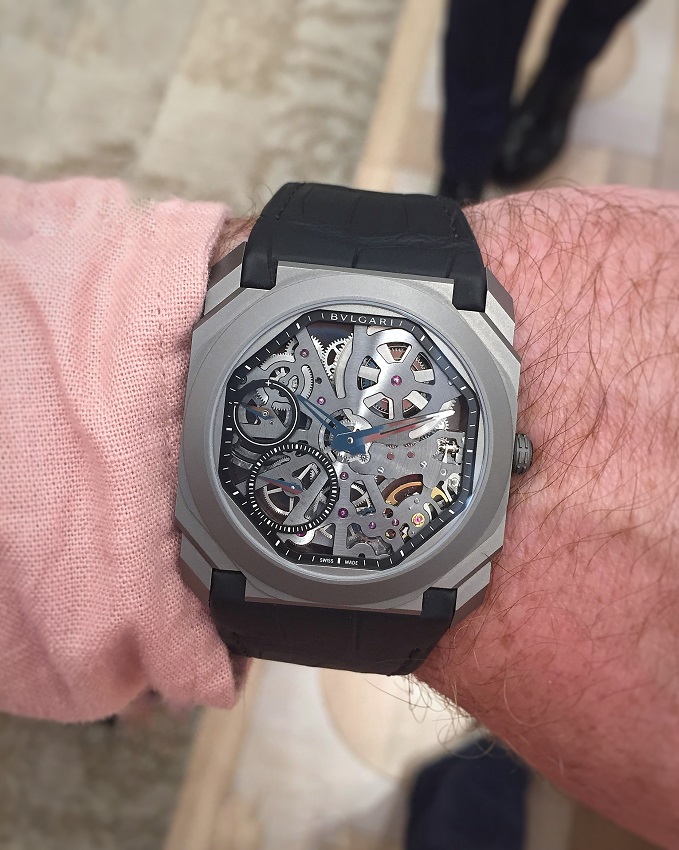
Bulgari Octo Finissimo
The first is the standard Octo Finissimo with hours, minutes, small seconds (at 7 o’clock) and power reserve indicator (just above 9 o’clock), showcasing the skeletonised BVL 128SK calibre which is just a mind-boggling 2.35mm thick. This movement offers an impressive 65 hours of power reserve when fully wound, and is finished to a very standard too, with polishing techniques, a circular brushing detail which is concentric from the centre of the watch, and chamfering applied to the edges of the bridges and component parts.
Second is something very special – the Octo Finissimo Tourbillon Squelette. When announced in 2018, it broke not one, not two, but three world records in one fell swoop. It became the world’s thinnest automatic watch, the world’s thinnest automatic tourbillon watch, and also the world’s thinnest tourbillon. To achieve this, Bulgari introduced a new calibre, BVL 288, which measures just 1.95mm thick. Take a moment to let that sink in – an automatic tourbillon movement (for reference, a penny is 1.65mm thick). The watch is so thin that you even need a little pusher (seen at 4 o’clock on the case) to allow you to use the crown to set the time because the stem of the crown is in the same plane as the peripheral rotor!
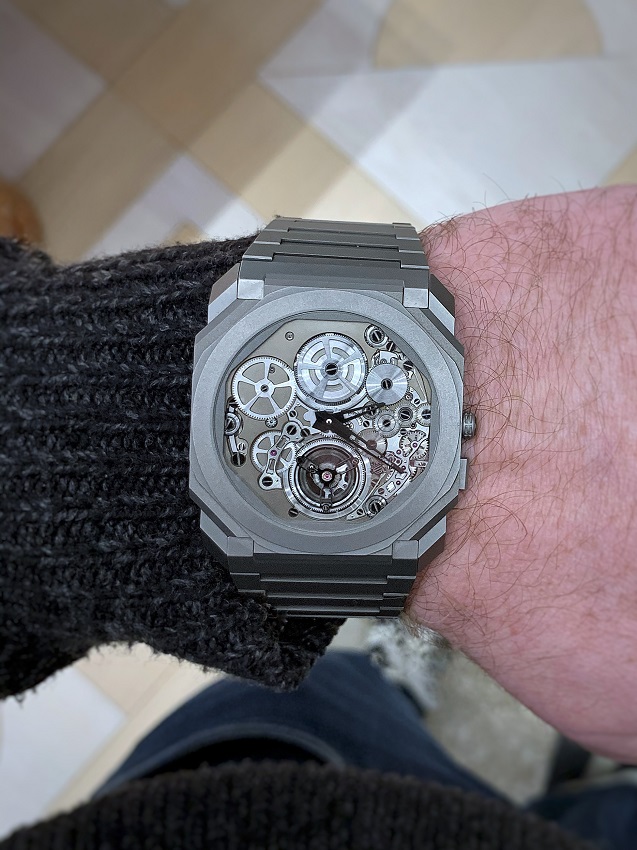
Bulgari Octo Finissimo Tourbillon Squelette, limited to 50 pieces

Calibre BVL 288 - an incredible 1.95mm thick
I really do love the Octo Finissimo collection, and in my opinion these openworked dial versions from the collection serve to highlight the underlying technical brilliance of the watches. The design aesthetic might not be for everyone, but for certain, everyone can appreciate these watches for what they are.
The Octo Finissimo skeletonised watch is available priced £18,800 whereas the Tourbillon Squelette is a limited edition of just 50 pieces, with price on application.
Zenith Defy Classic Openworked
At Baselworld in 2018, Zenith introduced a series of new models to its entry level Zenith Defy Classic, including options available in an openworked dial. Today the Defy Classic is offered in a range of ceramic cases available in black, white or blue, and then also in brushed titanium with a bracelet or strap option.
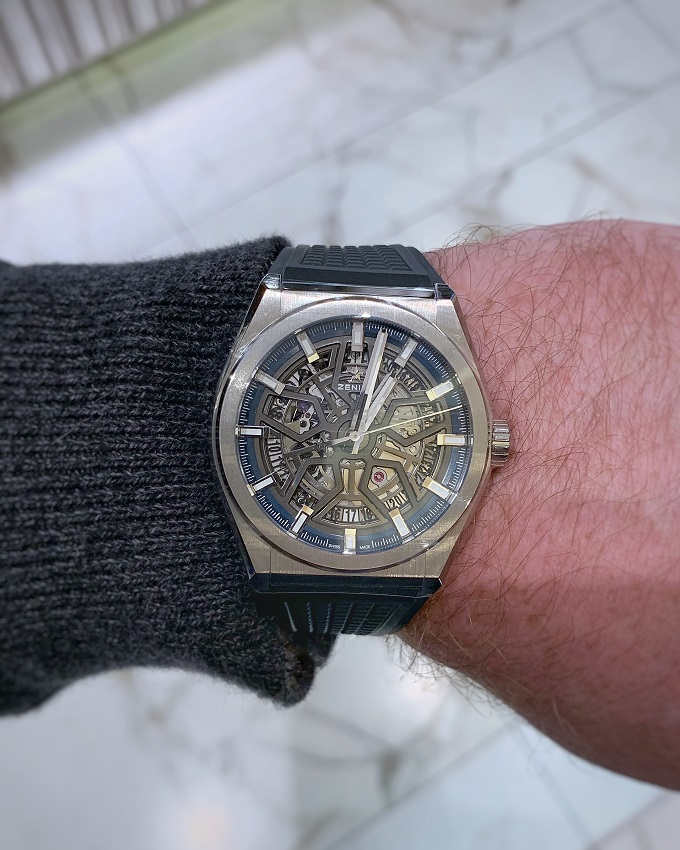
Zenith Defy Classic in titanium
Each is a simple three hand watch with a date complication, driven by the exposed Elite 670 SK calibre. This is the first watch I’ve featured here which incorporates the date complication, and the cool thing about that here is you can see the skeletonised date wheel around the periphery of the dial, with the correct date highlighted at the 6 o’clock position. For me, this adds a new dimension to the idea of the openworked dial exposing the inner-workings of the watch, and I find it particularly interesting to see how the added complication of the date is incorporated into the watch.
I think the Zenith Defy Classic is a wonderful watch, perfectly suited as a great looking everyday wear or even a summer watch as well (with 100m water resistance to boot) and with both a ceramic case and openworked Zenith movement offers a strong value proposition at £6,700, or if you opt for the titanium case on a strap the price is £5,900.
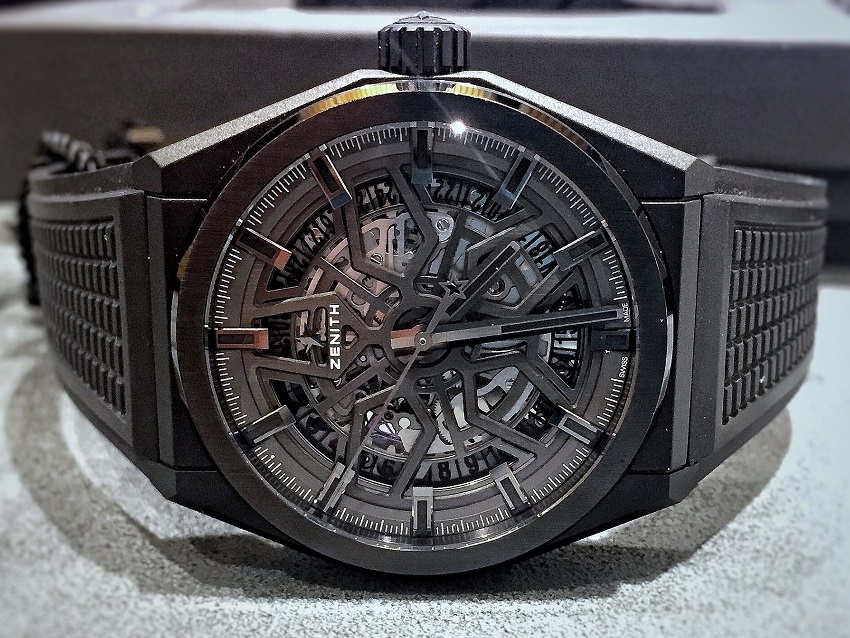
Zenith Defy Classic in black ceramic
And last but not least – a skeletonised Roger Dubuis Excalibur
Roger Dubuis, for my money, are the undisputed masters of skeletonised watches. The Excalibur collection is home to a great many of them, almost all of which are based on a five-point star design which is built into the bridges of the watch. Here’s a few of them just to give you an idea – I highly recommend visiting a Roger Dubuis boutique to explore these in more detail – they really are incredible!
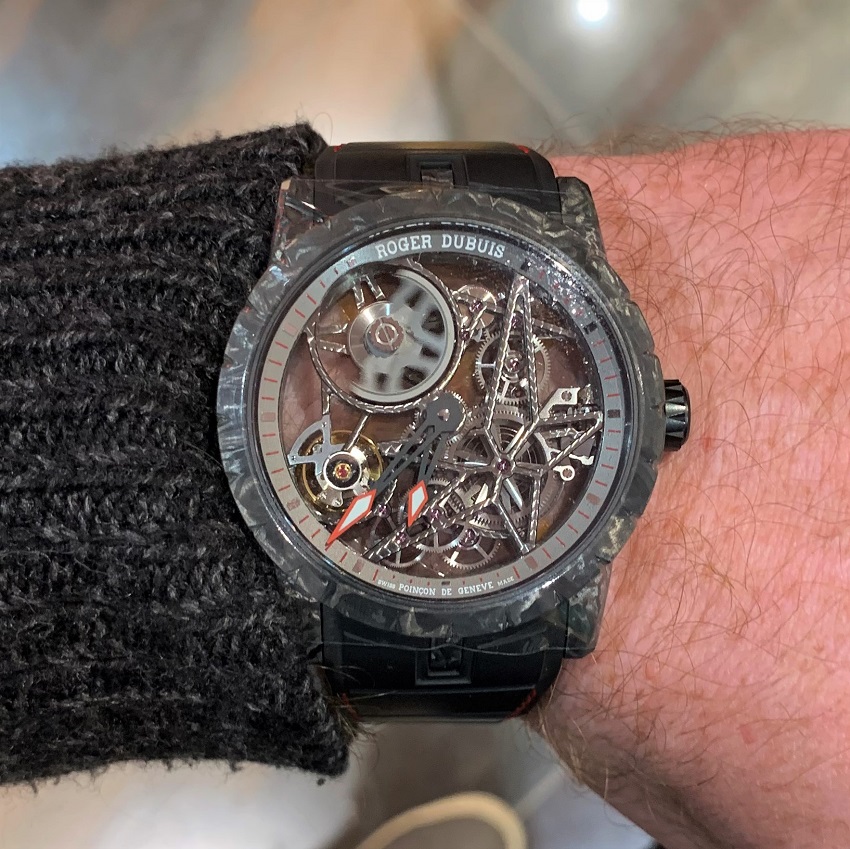
Note the five-point star detail in the design and the micro-rotor at 11 o'clock
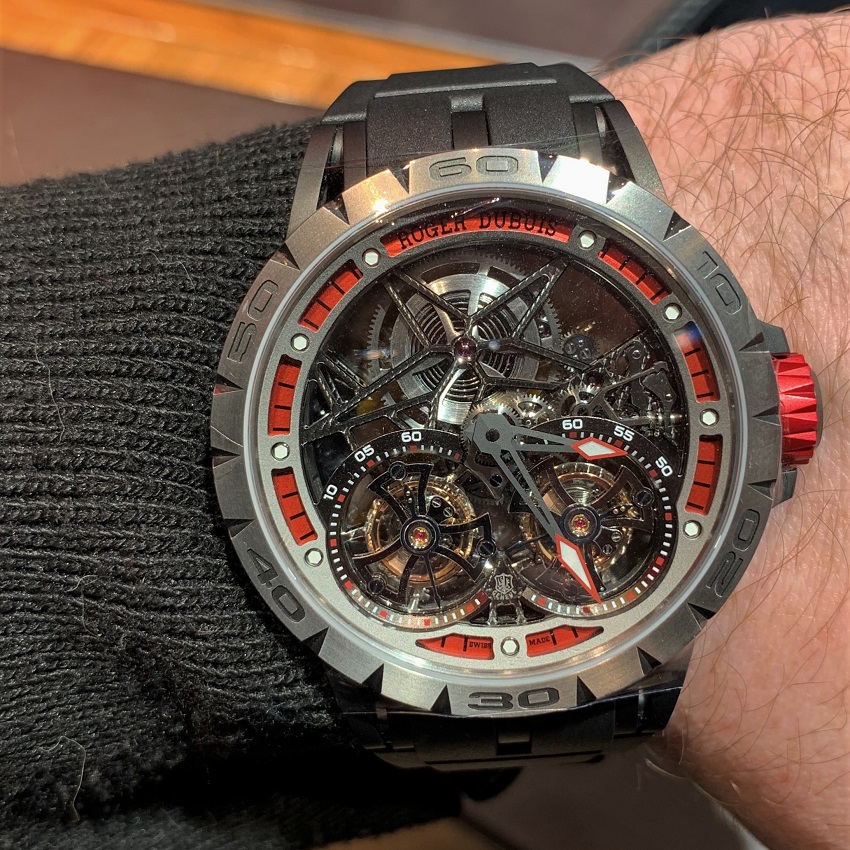
Excalibur Double tourbillon
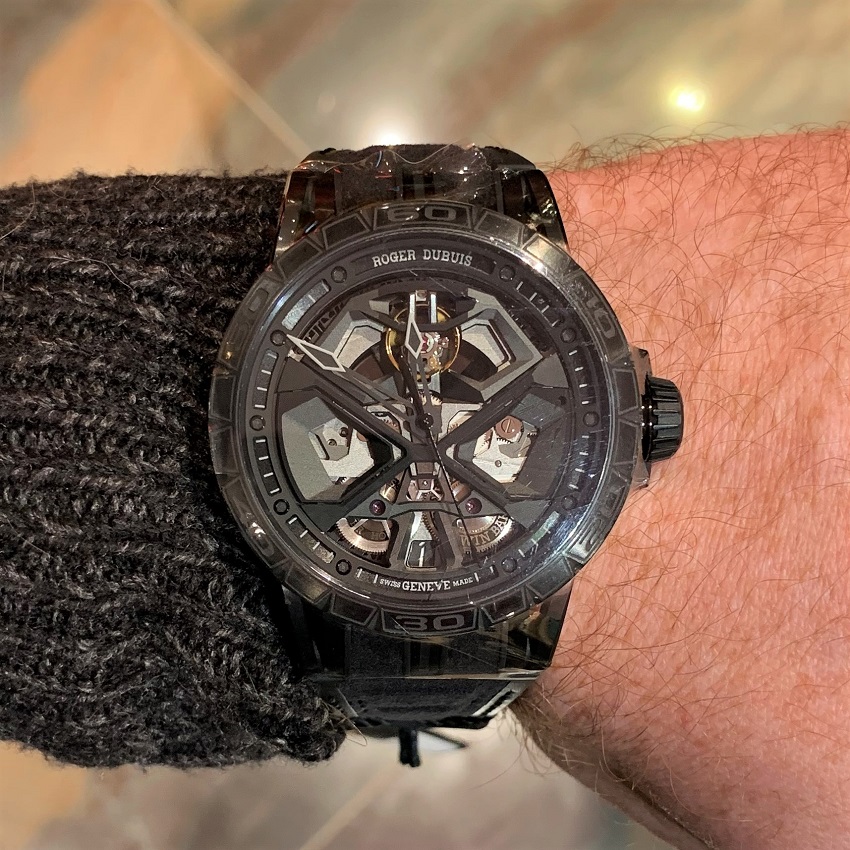
Excalibur Spider Huracán
In Summary
In my opinion, openworked dial watches offer a great opportunity to be able to enjoy the mechanical side of watchmaking without having to rely on a sapphire caseback to view the movement (which is normally firmly affixed to your wrist, anyway). I find mechanical watch movements utterly mesmerising to watch, and the intricacy of hundreds of tiny components working in unison to deliver the output of an accurate timekeeping device that is strapped to your wrist never ceases to amaze me.
With an openworked dial, you can enjoy this aspect every time you glance down at your wrist to check the time, and it can certainly make for a conversation starter as well! Hopefully from this article you’ve seen a watch you hadn’t previously been aware of and been able to appreciate some of my favourite openworked dial watches. The best bit for me is that almost all of these watches are ones that you can walk into a retailer and see there and then, with no deposits required or multi-year waitlists to be endured.
Of course, having only focused on a few there a many just-as-deserving watches that I’ve not counted – be sure to get in touch and let me know your favourites!
If you have any questions, or want to share your thoughts, please get in touch via our Contact page, or via our Instagram.
You might also be interested in:
- In Pursuit of Ultra-Thin Watchmaking
- Influential Watchmakers: John Arnold
- Spotlight: Pilots Watches
- Watch Stationery and Gift Ideas
- Watch Books, Watch Boxes and more at the Watch Affinity Shop on Amazon (commissions earned)
As an Amazon Associate, I earn from qualifying purchases – thank you for your support

